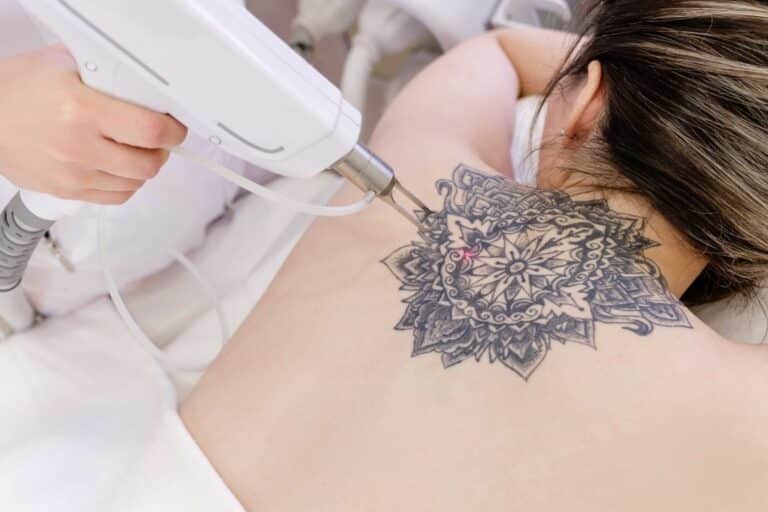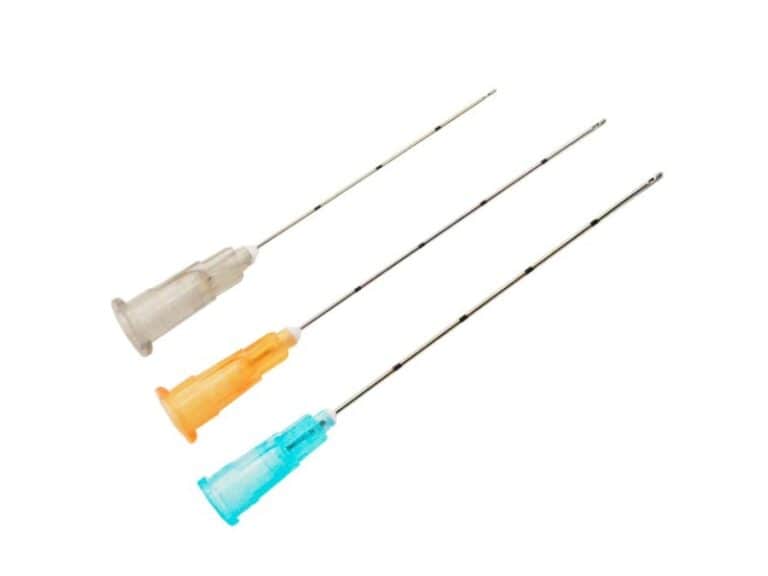Shaping Confidence: The Transformational Effects of Buttock Augmentation Using Your Own Fat
Fat transfer, a cutting-edge procedure in the cosmetic surgery realm, offers individuals an opportunity to enhance their appearance by relocating fat from one area of their body to another. This technique not only promises a more natural look but also minimizes the risks associated with synthetic fillers. By utilizing one’s own fat cells for augmentation or correction purposes, patients experience dual benefits: reducing unwanted fat deposits and enhancing volume where needed. As we delve into the intricacies of this procedure, it becomes clear why fat transfer has emerged as a preferred choice for those seeking aesthetic improvements without compromising on safety.
Understanding Brazilian Butt Lift Surgery
Fat Transfer Basics
A Brazilian Butt Lift involves moving fat from one part of the body to the buttocks. This process enhances both shape and volume. The goal is to create a more appealing rear view.
Doctors take unwanted fat from areas like the abdomen or thighs. They then purify this fat before injecting it into the buttocks. This method ensures a natural look and feel.
Buttock Augmentation
The Brazilian Butt Lift stands out among butt lift procedures. It uses your body’s own fat, unlike buttock implants which involve synthetic materials.
This surgery not only improves buttock ptosis but also adds volume where needed. Patients choose this over implants for its more natural result and lower risk of complications.
Distinctions
Comparing a Brazilian Butt Lift to other methods highlights its benefits:
- No foreign objects in your body.
- Dual benefit: removes unwanted fat and enhances the buttocks.
- Lower risk of rejection by the body.
However, not everyone is a candidate for this procedure:
- Must have enough excess fat for transfer.
- Requires good skin elasticity in the buttocks area.
Role of Fat Grafting in Enhancing Buttocks
Fat Grafting Technique
Fat grafting involves three key steps. First, fat harvesting occurs where fat is taken from one part of the body. Common areas include the abdomen and thighs. Then, the harvested fat undergoes purification to separate viable fat cells from other components. Finally, these purified fat cells are injected into the buttocks.
This process allows for a more natural-looking enhancement of the butt area. It’s less invasive than implant surgery and uses the patient’s own tissue.
Natural Results
Using a patient’s own fat leads to results that look and feel natural. The body is more likely to accept its own tissue compared to synthetic materials used in implants.
The texture and shape achieved through fat transfer blend seamlessly with existing tissues. This method avoids issues like implant displacement or unnatural contours often associated with buttock augmentation using implants.
Fat Survival Rate
Not all transferred fat survives in its new location. Factors affecting survival include technique used, patient health, and how well post-procedure care is followed.
- A successful outcome depends on maximizing fat cell survival.
- Techniques have evolved to improve outcomes by enhancing blood supply to transplanted fat cells.
Preoperative Planning and Patient Selection
Ideal Candidates
Selecting the right patient is crucial for the success of a fat transfer procedure. The ideal candidates are those in good health with realistic expectations. They should have enough fat reserves for extraction and transfer.
Patients must understand that results vary based on their body type. Not everyone will achieve the same outcome from fat grafting to enhance buttocks, as discussed in the previous section. This understanding helps set achievable goals.
Realistic Expectations
During consultations, it’s important to discuss what is realistically achievable. Many patients come with high hopes of dramatic transformations. However, factors like age and body anatomy limit what can be done.
A detailed discussion helps align patient expectations with possible outcomes. It ensures satisfaction post-surgery.
Customized Plans
Every patient has unique needs and goals which require tailored surgical plans. Important factors include neurovascular structures’ safety and maximizing aesthetic results while minimizing risks.
Customization might involve varying amounts of fat transferred or focusing on specific areas around the buttocks for enhancement. This approach ensures that each patient receives care best suited to their individual anatomy and desires.
Operative Techniques and Personalization
Liposuction Techniques
Different liposuction techniques play a crucial role in fat transfer. The goal is to harvest fat safely while maintaining its viability for transfer. Some methods include tumescent, ultrasound-assisted, and laser-assisted liposuction.
Each technique has its pros and cons. Tumescent liposuction uses a saline solution to make fat removal easier. It’s known for less bleeding. Ultrasound-assisted breaks down fat cells with sound waves, aiding in smoother contouring. Laser-assisted targets small areas with precision but requires expertise.
Fat Grafting Strategies
Maximizing the fat graft take is essential for successful augmentation procedures. Key strategies involve careful handling of the harvested fat and precise injection techniques.
One approach focuses on injecting small amounts into various tissue layers, including intramuscular injections for maximal projection. This method helps avoid large clumps that might not survive. The literature also stresses the importance of creating a natural look by addressing asymmetries and ptosis.
Tailoring Procedures
Every patient has unique desires regarding shape and volume in augmentation procedures like sculpting the buttocks or other body parts. Personalization involves discussing goals extensively during preoperative planning.
Surgeons consider several factors: desired projection, presence of asymmetries, location preferences (such as above or below certain folds), and overall body proportions. Tailoring these aspects ensures each patient achieves their specific aesthetic goals while maintaining harmony with their body’s natural contours.
Recovery Process and Postoperative Care
Recovery Timeline
After a fat transfer procedure, patients often wonder about the recovery timeline. The process varies but follows a general pattern.
Most people can return to work within one to two weeks. However, full recovery may take up to six months as swelling decreases and transferred fat stabilizes. It’s crucial during this time to follow postoperative guidelines closely for optimal results.
Postoperative Care
Proper care after surgery is essential for healing and achieving desired outcomes. Two key components of postoperative care are wearing compression garments and adhering to specific sitting protocols.
Compression garments help reduce swelling by applying even pressure around the treated areas. They should be worn as directed by your surgeon, typically for several weeks post-surgery.
Sitting protocols are particularly important after fat transfers involving the buttocks (e.g., Brazilian Butt Lift). Patients are advised not to sit directly on their buttocks or lie on their backs for at least two weeks to avoid damaging the transferred fat cells.
Follow-Up Appointments
Regular follow-up appointments play a significant role in monitoring healing progress after a fat transfer procedure. These appointments allow your surgeon to assess how well the transferred fat is integrating with its new environment and identify any potential issues early on.
During these visits, adjustments might be made concerning compression garment use or activity levels based on individual healing rates. Skipping these appointments could hinder recovery or affect final results negatively.
Results, Safety, and Complications
Final Results
After a fat transfer procedure, patience is key. The final results are not immediate. Swelling must go down first. This can take several weeks or even months. Most patients see their desired outcome after three to six months.
During this time, following postoperative care instructions is crucial for the best results. These guidelines help reduce swelling and shape the treated areas correctly.
Risk Management
Fat transfer procedures carry risks like any surgery. However, understanding these risks can help minimize complications. Potential issues include infection, irregularities in contour, and fat reabsorption by the body.
To lower these risks:
- Choose an experienced surgeon.
- Follow all pre-and post-surgery instructions.
- Attend follow-up appointments without fail.
These steps ensure patient safety and improve outcomes.
Safety Profile
The Brazilian Butt Lift (BBL), a popular type of fat transfer surgery, has been studied extensively for its safety profile. While it carries a higher complication rate compared to other cosmetic surgeries, strict adherence to safety protocols significantly reduces serious complications.
Key factors contributing to a safe BBL procedure include:
- Proper patient selection
- Use of refined surgical techniques
- Postoperative care adherence
Patients in good health who choose skilled surgeons tend to report high satisfaction rates with minimal adverse effects.
Cost Considerations for Brazilian Butt Lift
Cost Factors
The cost of a Brazilian Butt Lift (BBL) varies widely. It depends on several key factors. These include the surgeon’s fee, anesthesia costs, and facility fees.
Surgeons with extensive experience usually charge more. However, their expertise can lead to better results and fewer complications. Anesthesia and facility fees also add to the total cost. They cover the use of operating rooms and ensure patient safety during the procedure.
Long-term Value
Opting for cheaper options might seem appealing at first glance. Yet, it may not always be safe or effective.
Cheaper surgeries often cut corners in crucial areas such as facility quality or staff expertise. This increases risks and can lead to unsatisfactory outcomes or health issues later on.
It is vital to consider the long-term value over initial expense when choosing a BBL surgery provider.
- A successful BBL enhances body shape and hip ratio permanently.
- Choosing a reputable surgeon ensures safety and satisfaction with your investment.
Selecting a Qualified Cosmetic Surgeon
Credentials Check
When looking for a cosmetic surgeon for fat transfer, credentials are key. Board-certified plastic surgeons have undergone extensive training specifically in cosmetic procedures. This ensures they understand not just the basics but also the complexities of fat transfer techniques.
Surgeons should have experience with transferring fat to various parts of the body. This includes understanding how to contour body shape by removing excess fat from one area and adding it to another. Ideal candidates for this procedure often seek improvements in areas like hips or subcutaneous planes without resorting to silicone implants.
Before-and-After Gallery
Evaluating before-and-after photos is crucial when choosing your surgeon. These galleries showcase the surgeon’s skill in achieving natural-looking results through fat transfers. Look for patients with similar body shapes and goals as yours.
Photos can demonstrate how effectively a surgeon can enhance body contours while minimizing scars. They also provide insight into how well surgeons manage weight distribution and intramuscular injections, ensuring lasting results.
Board Certification Importance
Choosing a board-certified plastic surgeon cannot be overstated for both safety and desired outcomes in fat transfer procedures.
Board certification means that the practitioner has met rigorous standards set by professional boards governing plastic surgery. Many surgeons may offer cosmetic services, but only those who are board certified specialize solely in these complex treatments.
Certification assures that your surgeon understands layers beneath the skin, including unwanted fat removal strategies and precise placement techniques necessary for optimal recovery and appearance enhancement.
Closing Thoughts
The journey through Brazilian Butt Lift surgery, from understanding its nuances to navigating the recovery process, underscores its complexity and the importance of professional guidance. Highlighting fat grafting’s pivotal role in enhancing buttocks aesthetics, the discussion extends through meticulous preoperative planning, personalized operative techniques, and diligent postoperative care, to evaluating results, safety concerns, and cost considerations. This comprehensive exploration emphasizes selecting a qualified cosmetic surgeon as crucial for achieving desired outcomes and minimizing risks. The synthesis of these elements reinforces the necessity for informed decision-making rooted in expertise and patient-centric approaches. As individuals contemplate this transformative procedure, they are encouraged to seek consultations with board-certified cosmetic surgeons who can provide tailored advice and support throughout their journey.
For those considering a Brazilian Butt Lift, taking the step to consult with a professional can illuminate the path toward achieving personal aesthetic goals safely and effectively.
Frequently Asked Questions
What is a Brazilian Butt Lift?
A Brazilian Butt Lift (BBL) is a cosmetic procedure that enhances the buttocks through fat grafting. Fat is harvested from other body parts and injected into the buttocks for a fuller, more rounded appearance.
How does fat grafting work in BBL surgery?
In BBL surgery, fat grafting involves removing excess fat from areas like the abdomen or thighs via liposuction, purifying it, and then carefully injecting it into specific areas of the buttocks to achieve desired volume and shape.
Who qualifies for Brazilian Butt Lift surgery?
Ideal candidates are those in good health, with realistic expectations, and have sufficient fat reserves in other body parts for transfer. Preoperative planning includes assessing overall health and determining if you’re a suitable candidate.
What should I expect during recovery from BBL?
Post-BBL recovery involves wearing compression garments to reduce swelling, avoiding sitting directly on your buttocks for several weeks to ensure optimal fat graft take, and following personalized care instructions provided by your surgeon.
Are there risks associated with Brazilian Butt Lifts?
Yes. Like all surgeries, BBL has risks including infection, scarring, asymmetry or dissatisfaction with results. Choosing an experienced surgeon can minimize these risks but not eliminate them entirely.
How much does a Brazilian Butt Lift cost?
The cost varies widely depending on geographic location, surgeon’s experience level, complexity of the procedure required for desired outcomes. It typically ranges from $2k to over $10k.
How do I choose a qualified cosmetic surgeon for my BBL?
Selecting a board-certified plastic surgeon who specializes in body contouring procedures like BBLs ensures they have undergone rigorous training and adhere to high safety standards. Review their before-and-after photos and patient testimonials as part of your decision-making process.






